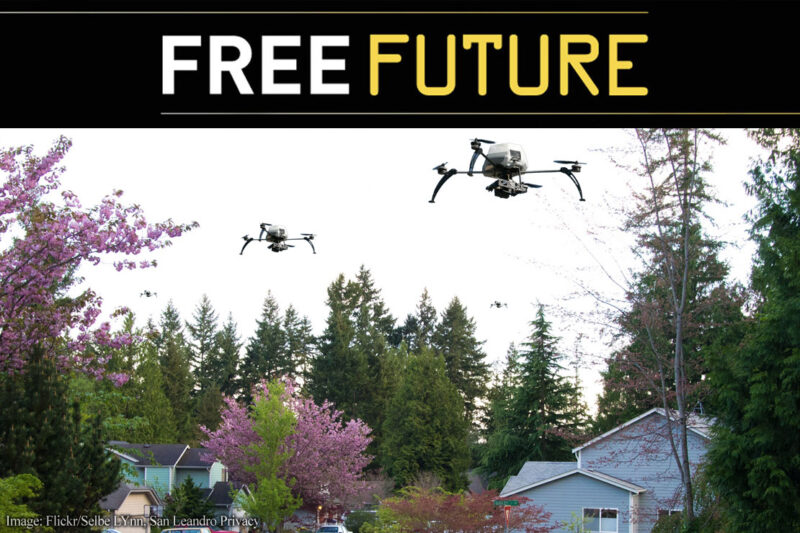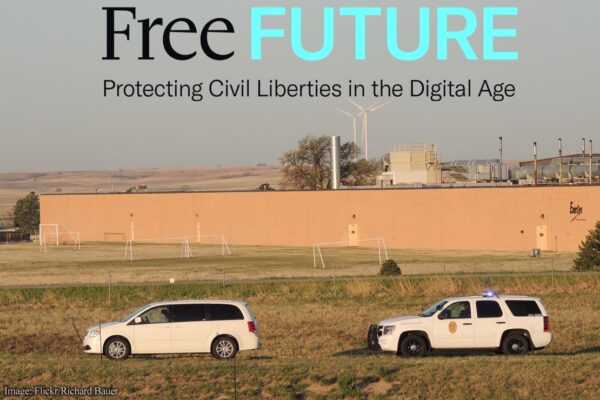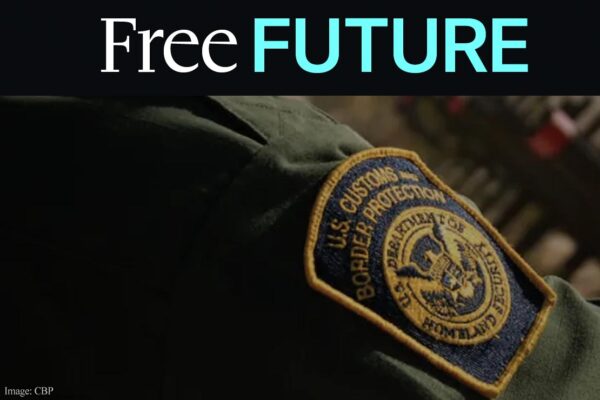Autonomous Drone Patrols Start to Become a Thing


A drone security business has received permission from the FAA to operate autonomous patrol drones nationwide on business properties such as car dealerships. This “first-of-its-kind” , as last week by the drone news site DroneLife, exempts the company from rules that normally prohibit a drone from being flown beyond the operator’s line of sight. The flights drones that autonomously follow a pre-programmed patrol path and, to the vendor, can “automatically respond to security alerts with minimal human intervention.”
You know who else would love to carry out routine autonomous drone patrols? A lot of police departments.
We at the ∫Ï–” ”∆µ have always allowed that there are some very good uses for drones, such as searching for a lost person on a cold night in the wilderness. But we‚Äôve also been very concerned by other law enforcement uses, such as the monitoring of protests and other gatherings and drones as . But the use of drones for patrols is something that we vehemently oppose. As far as we are aware, only one municipality is doing anything like that: .
We don’t want to end up in a nightmare scenario where drones are used for mass surveillance and the experience of having police flying cameras buzzing overhead becomes routine in people’s daily lives. As we have , it is not a stretch to imagine a police department deploying a swarm of cheap, autonomous craft that automatically fan out across a region, trade shifts with other drones, and dock themselves at charging stations in between.
Now, this new commercial kind of operation, run by a company called Titan Protection, is limited in important respects. The drones are not yet fully autonomous; while they have docks they can automatically take off from and return to, and programmed patrol routes they follow, the FAA still that a “remote pilot in command” oversee the flight. However, the FAA has a new set of regulations that would greatly loosen restrictions on autonomous drone flights, and if that rule goes into effect unchanged, it will vastly expand the number of autonomous drone operations in American airspace.
The company also seems to operate their drones entirely within private property, which greatly reduces the issues they raise. Other than potential noise complaints, the main privacy issue that such private operations bring up is what video of adjacent properties and public spaces these drones may record. When flying along the property perimeter at their maximum FAA-permitted altitude of 400’, a drone can capture quite a wide swath of off-property land.
Addressing this issue, the company’s president made I thought was interesting:
Privacy — that was a much bigger one than I think I thought initially, and that became top-of-mind when we started getting insurance policies and talking to insurance carriers. I thought their big concern was going to be the drone falling out of the sky, or hitting somebody, or that type of thing. Their main concern is how are we storing images, how are we training and auditing operators to make sure that as we're flying around the property, we're keeping the cameras where they're supposed to be and not zooming into the neighbor's window or — what are we capturing, what type of data, as the drone is flying around. So that's a big piece to think about.
We've seen some really unique things out in the drone space, a couple manufacturers. One actually has one that you draw a geofence around the property. As the drone's flying around, you get a very clear image of anything inside that geofence; anything outside of it is blurred out. And that's a really good hygiene piece, I think.
Score one for insurance companies. It’s good that, whatever the reason, this company is thinking through the privacy issues. And Titan’s operation certainly doesn’t equal the kind of nightmare scenario we’re worried about. Still, it’s worth being aware of this model; it represents a definite stride toward those darker scenarios. If this kind of drone use becomes commonplace in the private sector, not only can we can safely predict that many operators will not pay attention to the privacy issues, but it will also get harder to argue that “everyone except police should be able to use this technology.” Even though, because of the unique role that police play and the power they possess, that is often a policy that does make sense.
Police officials running drone programs today generally disclaim any interest in random suspicionless surveillance, but it’s easy to predict how things could go. It’s a big country, there is always a bell curve of departments, and there’s no doubt that some will eagerly embrace drone patrols if they feel they can get away with it. We’ve already seen that departments would love to impose blanket 24/7 aerial surveillance. And because, when you put everybody under a full-time government microscope, you inevitably do catch some wrongdoing, that will lead to isolated success-story anecdotes in which the technology purportedly saves the day, and the rest of the profession will start insisting on following suit.
Let’s not let that happen.
UPDATE 9/2/25:
My colleagues at the New York Civil Liberties Union alerted me to the fact that NYPD is also carrying out proactive drone patrols. I had been under the mistaken impression that they were just talking about doing so, but it seems clear that such operations are underway. The use of drones for patrol by the nation’s largest police department should be a further wake-up call for communities across the nation whose police departments are pushing to expand drone operations.
In a November 2024 press conference with Mayor Eric Adams, NYPD Deputy Commissioner Kaz Daughtry, discussing the city’s drones as first responder program and after dodging several questions about patrols, was asked, “Are there going to be any proactive flights as opposed to just responsive flights?” He responded:
Yes. When an officer is not picking up a radio run, which is a call for service, a 911 call, those officers do directive patrols in certain areas of the park. And I expect the drone team, the DFR team, to do those same type of directives. I expect them, if there's no calls, to launch the drones, to go fly over where the runners are at, to go fly over where large people are at, where there will be a demonstration inside of the park, a large gathering. I want the drones to give us an aerial view of exactly what's going on and just looking for anything out of the ordinary.
Daughtry’s use of the present tense “do” seems to clearly indicate such operations are already underway. (The department is also using drones to patrol the waters off city beaches for . That doesn’t raise the same level of concerns as community surveillance, except insofar as it means routinely photographing people on the beach. In that type of operation, the kind of geo-fencing that Titan’s president mentioned should be applied.)
Note that the New York operations are not autonomous, however. The NYCLU has published an excellent state, updated in April 2025 with FOIA data from the FAA.



